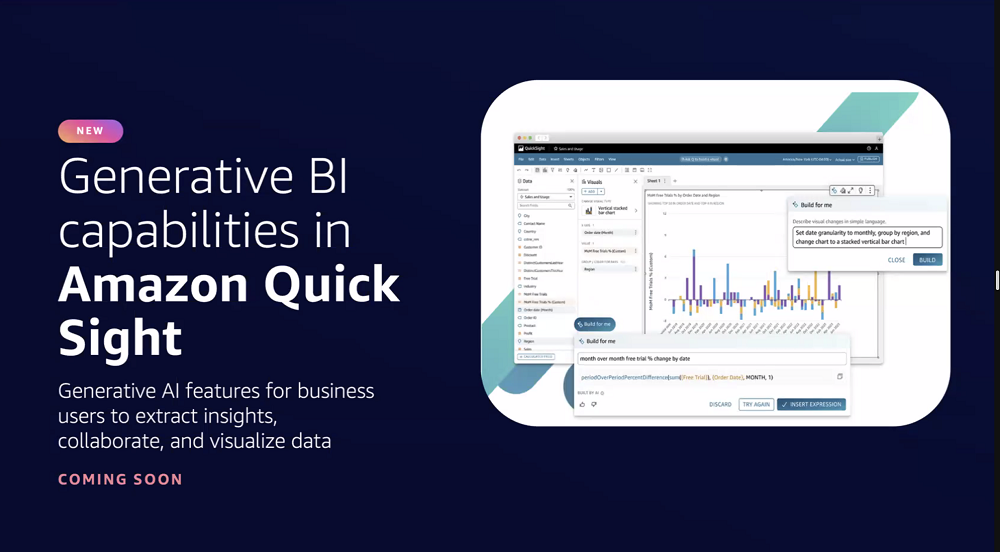With the launch of accessible generative artificial intelligence (AI) like ChatGPT last year, it’s no surprise that businesses have been testing how to integrate AI into their operations.
A 2023 Accenture study, however, indicated that though 60 percent of corporations are experimenting with AI, only 12 percent are utilizing it in ways that give them a competitive advantage.
To bridge the gap between experimenters and mature AI users, technology companies like Amazon Web Services (AWS) are introducing new products to help their clients adopt generative AI.
In a virtual briefing on Tuesday, August 29, the cloud computing giant AWS discussed emerging generative AI trends in business, its new innovations to support companies in developing their generative AI applications, and its upcoming AI apps.
During the briefing, Oliver Klein, AWS chief technologist in Asia Pacific and Japan, boasted that AWS has more than 100,000 customers using its platforms to run their Machine Learning (ML) and AI workloads, which allowed the company to observe unfolding use cases.
Some trends were expected after the launch of chatbots like ChatGPT and AI image generators such as MidJourney.
In fact, one of the trends AWS reported was the use of generative AI to expedite creative work, such as copy writing, media creation, and modelling.
AWS further confirmed that this technology is already enhancing customer’s experience through AI-powered chatbots, virtual assistants, and call centers.
Aside from these anticipated trends, AWS noted that generative AI is boosting employees productivity by improving the efficiency of internal database searches, summarizing these searches, or even assisting in coding.
It also has been employed to streamline business operations with early applications in document processing and data augmentation.
Businesses, though, don’t just want to know where generative AI is being used. They want to maximize it for their own operations.
To support companies in developing their own AI applications, AWS recently preview launched Amazon Bedrock.
Amazon Bedrock is a managed service that allows AWS clients to choose from five specialized foundation models owned by Amazon or its partners to build their own customized AI applications.
Foundation models are generative AI models that have been pre-trained on extremely large data sets and are the basis for AI applications.
“We believe that there’s not one model that’s gonna rule them all, but it’s rather the best model that is best suited for the use case of our customers,” Klein explained.
“So, you can see the idea here is we provide you with these pre-trained foundation models from ourselves, from our partners, and make them available for our clients to then fine tune these models securely and safely in their environments,” he added.
Additionally, Amazon announced two new tools, Agents for Amazon Bedrock and its Vector Engine for OpenSearch Serverless.
While these tools are not yet available, Agents for Amazon Bedrock will eventually help customers more easily connect Generative AI models with their existing systems and databases.
Similarly, the Vector Engine for OpenSearch Serverless — built atop a vector strategy that allows computer systems to more quickly infer relationships between words — will enable companies to efficiently fine-tune generative AI models to their industry and company culture.
However, if companies are looking for ready-made AI applications, AWS is working on expanding its AI solutions for different industries.
For instance, on top of its coding companion that was launched earlier this year, Amazon CodeWhisperer, the company will soon be releasing AWS HealthScribe and Amazon Quick Sight.
AWS HealthScribe is specifically trained to transcribe a clinician’s conversation with their patient, including the patient’s symptoms and diagnosis.
With this AI tool, healthcare workers can focus on their patient needs rather than documentation.
On the other hand, Amazon Quick Sight aims to accelerate business intelligence processes by using natural language modelling to create new dashboards and derive insights from their clients’ data.
Lastly, AWS aims to ensure that companies not only have Generative AI tools at their fingertips, but are equipped with the knowledge to take full advantage of them.
Klein pointed out that AWS has an AI Use Case Explorer, which is an interactive guide that AWS hopes will assist businesses leaders and AI practitioners in building useful AI applications.
In June of this year, AWS also opened seven free and low-cost courses where individuals can learn the skills to develop AI applications.
“Our vision is about how can we help with the ML innovations that we have and especially also in the Generative AI space. We want to democratize this technology and make it available for any of our customers,” Klein concluded.




